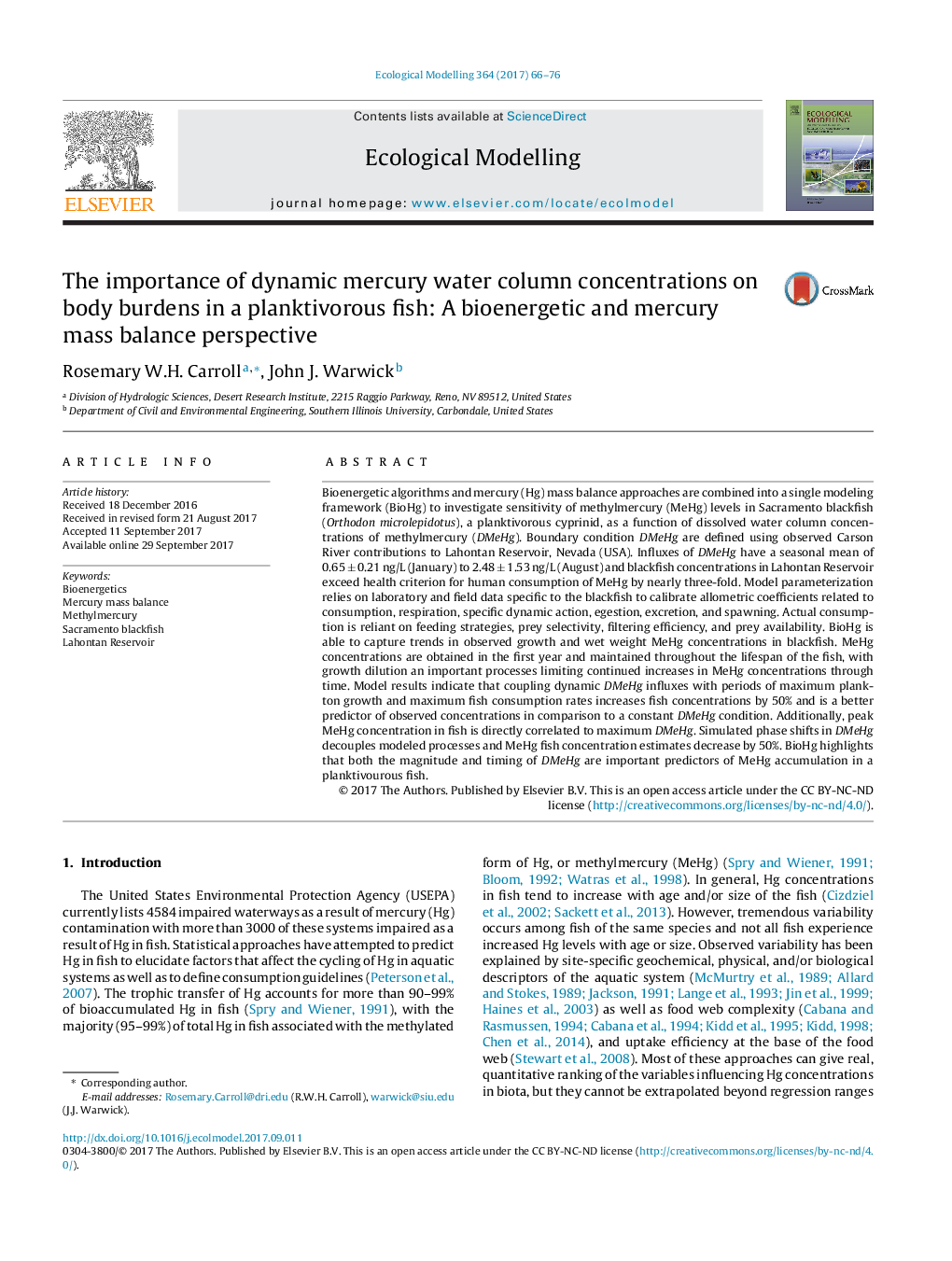| کد مقاله | کد نشریه | سال انتشار | مقاله انگلیسی | نسخه تمام متن |
|---|---|---|---|---|
| 5741982 | 1617383 | 2017 | 11 صفحه PDF | دانلود رایگان |
- A bioenergetics and mercury mass balance model of a filter feeding cyprinid.
- Model couples MeHg water influxes with plankton contamination and fish consumption.
- Dynamic MeHg water concentrations raise fish MeHg 50% over constant condition.
- A phase shift in MeHg influx decouples processes to reduce MeHg in fish tissue.
- Magnitude and timing of MeHg influx are important predictors of fish contamination.
Bioenergetic algorithms and mercury (Hg) mass balance approaches are combined into a single modeling framework (BioHg) to investigate sensitivity of methylmercury (MeHg) levels in Sacramento blackfish (Orthodon microlepidotus), a planktivorous cyprinid, as a function of dissolved water column concentrations of methylmercury (DMeHg). Boundary condition DMeHg are defined using observed Carson River contributions to Lahontan Reservoir, Nevada (USA). Influxes of DMeHg have a seasonal mean of 0.65 ± 0.21 ng/L (January) to 2.48 ± 1.53 ng/L (August) and blackfish concentrations in Lahontan Reservoir exceed health criterion for human consumption of MeHg by nearly three-fold. Model parameterization relies on laboratory and field data specific to the blackfish to calibrate allometric coefficients related to consumption, respiration, specific dynamic action, egestion, excretion, and spawning. Actual consumption is reliant on feeding strategies, prey selectivity, filtering efficiency, and prey availability. BioHg is able to capture trends in observed growth and wet weight MeHg concentrations in blackfish. MeHg concentrations are obtained in the first year and maintained throughout the lifespan of the fish, with growth dilution an important processes limiting continued increases in MeHg concentrations through time. Model results indicate that coupling dynamic DMeHg influxes with periods of maximum plankton growth and maximum fish consumption rates increases fish concentrations by 50% and is a better predictor of observed concentrations in comparison to a constant DMeHg condition. Additionally, peak MeHg concentration in fish is directly correlated to maximum DMeHg. Simulated phase shifts in DMeHg decouples modeled processes and MeHg fish concentration estimates decrease by 50%. BioHg highlights that both the magnitude and timing of DMeHg are important predictors of MeHg accumulation in a planktivourous fish.
110
Journal: Ecological Modelling - Volume 364, 24 November 2017, Pages 66-76
